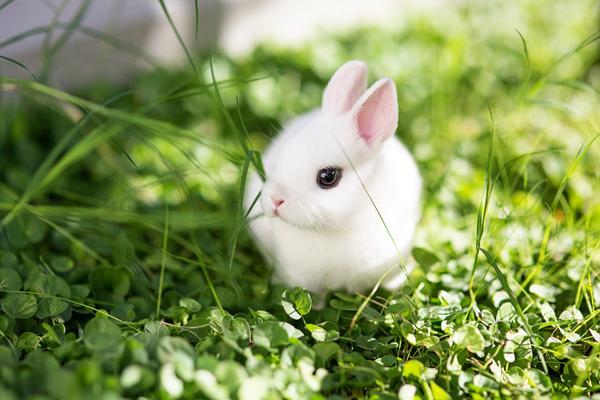Feeding A Dwarf Rabbit



See files for Rabbits
When it comes to feeding rabbits, many people immediately assume that lettuce and carrots will do the trick. However, feeding rabbits, specifically dwarf rabbits, is actually a little more complicated than a simple two ingredient diet. These rabbits require a specific diet in order to grow properly and healthily.
If you want to know how to feed your dwarf rabbit, keep reading this AnimalWised article for more. Not only will we be presenting you with a complete guide, but we will also summarize them within different age ranges.
Origin of a dwarf rabbit
The dwarf rabbit, also known as toy rabbit, originated in Holland in the 20th century. Its origin was derived from cross breeding of small rabbits, both domestic and wild. Dwarf rabbits are a product of the mutation of a recessive gene that causes dwarfism.
The dwarf rabbit can reach a maximum of 1.5 kilos and measures between 30 and 50 centimeters. It is a distrustful and fearful little rabbit, therefore it is necessary to have a lot of patience with it. Its diet is very important in order to avoid disorders such as; diarrhea, obesity and poisoning (consumption of toxic plants). Keep reading to find out more about how to feed a dwarf rabbit.
Digestive process of the dwarf rabbit
A dwarf rabbit needs to eat food consistently throughout the day. They are quite glutenous little animals. This rabbit needs small food portions which are administered continuously. The reason for this is due to the way that it digests food, which is classified as "passive". This means that whenever a dwarf rabbit eats food, it stays in its digestive tract until other ingested food pushes the resting food through into its digestive tract.
Once the food group is digested, the rabbit expels it through a soft excrement that it then ingests, again: taking advantage of all of its nutrients. This is called coprophagy. The excrements are then expelled again in the form of harder faeces, which are not ingested.
This digestive process means that the type of food which the rabbit ingests is very important. This is because some specifics food can ferment in the digestive tract and cause diarrhea. Therefore, we recommend feeding your dwarf rabbit food high in cellulose and low in: sugar, starch and fat.
How to feed a baby dwarf rabbit?
If you have just adopted a baby dwarf rabbit, follow this guide on how to feed a baby dwarf rabbit:
What does a 1 month old dwarf rabbit eat?
When feeding a dwarf rabbit, their diet needs to be managed from the day it is born. Before it is 3 months old, it is recommended that the rabbit consumes hay rich in fiber. This high fiber intake will aid it in regulating digestion and keeping its teeth healthy. It is also very important that it always has a container of fresh water to drink from.
Do not offer your baby dwarf rabbit its next portion of hay until its first one is done. This is recommended to prevent rotting. You can also feed your baby dwarf commercial feed, high in fiber and low in fat. Do not feed it more than three tablespoons of this feed a day. In this young stage, cereals must be avoided, since they contain too much fat.
What does a dwarf rabbit eat from 3 to 12 months?
After 3 months, fresh vegetables should be added to this consumption of hay and feed. Add one or two pieces of different vegetables (twice a week): allowing the rabbit time to familiarize itself with these new foods. During this introductory process, remain attentive in case any of these new foods cause diarrhea or discomfort in your dwarf rabbit.
As your rabbit grows, so should its portions. However, at this stage, its should still not exceed: three tablespoons of feed a day, chopped vegetables (given 3-4 times) and some fruit every couple of days.

How to feed an adult dwarf rabbit
Once your dwarf rabbit reaches maturity, around 9 to 12 months, it is necessary to reduce commercial feed and increase fresh fruit and vegetable consumption.
It is recommended to offer your rabbit 3- 4 types of fresh, cut and clean vegetables a day. Hay is indispensable, so it must be available at all times. Regarding the feed, choose one with a higher fiber content and little protein, little calcium and no fat. Feeding an adult dwarf rabbit should add up to 30 grams a day. We recommend only feeding your rabbit fruit between two and three times a week, as it contains a high sugar content. You can vary the types of fruit so that your rabbit accustoms itself to all different types of fruit.
We recommend avoiding rabbit treats regularly and only offering them a couple of times a month. In addition, a healthy rabbit should consumed between 80 and 150 milliliters of water a day.
Rabbits can spend a large part of their day just eating, so if you're not at home, leave a lot of hay and its daily portion of feed in its cage with some fresh vegetables. Do not overcrowd it cage with food, otherwise it will waste and decompose. Although rabbits do eat a lot, each portion in itself is small.
Recommended foods for rabbits
Here is a list of fruits and vegetables that you can offer your dwarf rabbit;
- Spinach
- Carrot
- Beet
- Cucumber
- Basil
- Turnip
- Celery
- Lettuce
- Alfalfa sprouts
- Broccoli
- Chard
- Papaya
- Cherry
- Kiwi
- Peach
- Pineapple
- Watermelon
- Strawberry
- Cantaloupe
- Apple
- Artichoke
- Mint
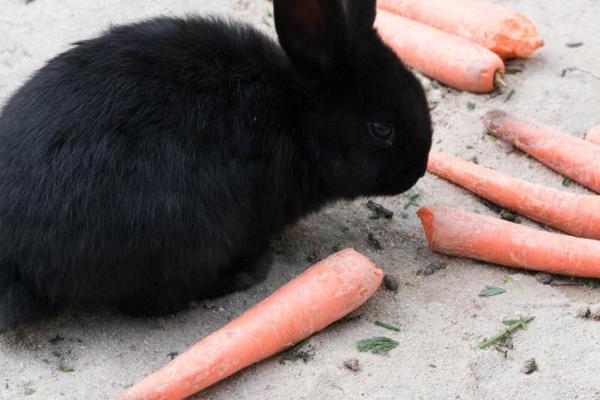
Toxic food for dwarf rabbits
There are also some harmful foods which are toxic to dwarf rabbits. Some of these can be eaten, but only in very small quantities. These foods include;
- Nightshade
- Oats
- Dairy products
- Legumes
- Parsley (in large quantities)
- Bread
- Potatoes
- Sweets and sugars
- Garlic
- Fried food
- Food for humans, dogs or cats
- Nuts
How to feed a dwarf rabbit?
Now that you know how to feed a dwarf rabbit, follow these general tips on how to feed your rabbit correctly;
- Offer you rabbit fruits and vegetables which have been: washed, cut and at room temperature and never cold.
- Monitor your rabbit’s health when you introduce new food, only then will you be able to notice if it can digest it properly.
- The hay should always be at disposal. Make sure that this hay is always fresh.
- Make sure that this hay includes pieces or small blocks of wood that the rabbit can gnaw on to wear its teeth.
- All dietary changes should happen gradually, not suddenly.
- If a food (vegetable or fruit) spends all day in the cage, remove it to avoid molding and decomposition in the cage.
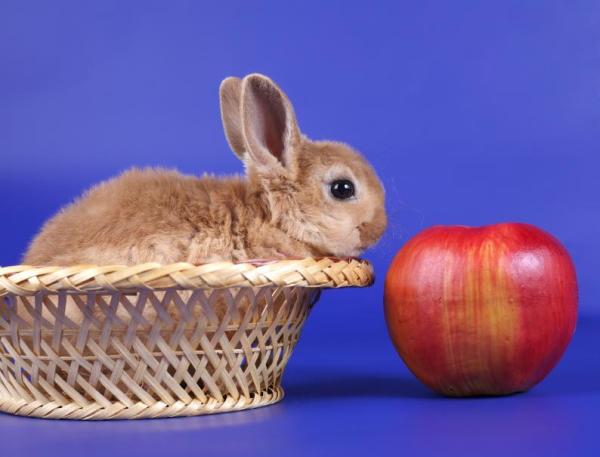
If you want to read similar articles to Feeding A Dwarf Rabbit, we recommend you visit our Healthy diets category.

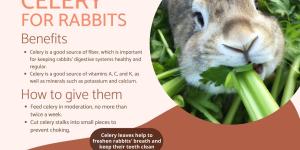
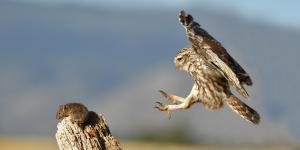

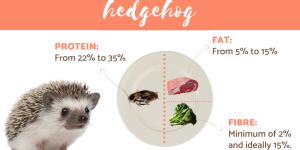

 Broccoli is not recommended only the leaves..Gas problems. My rabbit rescue person SAID NO spinach No alfalfa for grown rabbits. I trust her with my rabbits life and wellbeing.
Broccoli is not recommended only the leaves..Gas problems. My rabbit rescue person SAID NO spinach No alfalfa for grown rabbits. I trust her with my rabbits life and wellbeing.
